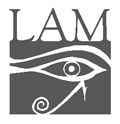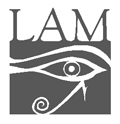The eLitMed.hu medical portal uses computer cookies for convenient operation. Detailed information can be found in the Cookie-policy.
Lege Artis Medicinae - 2006;16(12)
Content
[THE ROLE OF THE ENDOCANNABINOID SYSTEM]
[Cannabinoid research in the last two decades became one of the most important fields in medical science, mainly because of the discovery of the endocannabinoid system and the understanding of the close connections between this system and several important diseases and pathological states. The endocannabinoid system has been shown to be present and active in many tissues and organs including the central nervous, gastrointestinal and reproductive systems, liver, lungs and bones. Its role in eye function, malignant diseases, pain and inflammation has also been studied. This review gives a summary of all these results with special attention to the role of the endocannabinoid system in energy metabolism and cardiovascular regulation.]
[CLINICAL ASPECTS OF NOCTURNAL GASTRO-OESOPHAGEAL REFLUX]
[Gastro-oesophageal reflux that occur at night has special clinical features and thus require extra attention. During sleep most anti-reflux mechanisms diminish, which results in prolonged contact between gastric acid and oesophageal mucosa compared to reflux during the day. Nighttime reflux symptoms adversely affect quality of life, vitality, physical and mental health. A further important consequence is the potential exacerbation of respiratory disorders such as asthma and sleep apnea. There is increasing interest in the association between nocturnal reflux and certain extra-oesophageal symptoms, including reflux laryngitis and chronic cough. An increased risk of erosive damage and adenocarcinoma of the oesophagus are also observed among patients who report nocturnal reflux symptoms. The primary goal of treatment is to improve quality of life and reduce the risk of complications by decreasing the time of acid contact with oesophageal mucosa. Nighttime reflux symptoms are much more difficult to control than daytime symptoms. Treatment guidelines generally recommend lifestyle changes as the initial approach in managing nocturnal symptoms, however, this is successful in only a small proportion of patients. Evidence-based reviews and meta-analyses favour the use of proton pump inhibitors in the treatment of gastro-oesophageal reflux disease and reflux-oesophagitis. Proton pump inhibitors are the most efficient acid-suppressing agents and thus diminish the harmful effect of acidic gastric reflux on the oesophageal mucosa. In addition, by decreasing the volume of gastric acid, they reduce the tendency to reflux.]
[SEVERE THERAPY RESISTANT BRONCHIAL ASTHMA]
[While severe asthma associated with high morbidity affects a relatively small proportion of all patients with asthma, it requires special attention and innovative treatment approaches. Although asthma is by definition characterized by reversible airflow obstruction, the obstruction becomes fixed to some extent and refractory to corticosteroids with the progression of the disease. The underlying change in this phenotype is airway wall remodelling. In allergic asthmatic patients who remain symptomatic despite highdose inhaled corticosteroid therapy, blockade of IgE with omalizumab confers appreciable clinical benefit. Chronic severe asthma is also accompanied by a marked increase in TNFproduction that might contribute to corticosteroid resistance. In accordance with this, TNF blockade with entanercept has been shown to improve asthma controll and at the same time to reduce bronchial hyperresponsiveness. Identification of new susceptibility genes, such as ADAM33, will provide further targets for therapy, which in turn can result in the development of treatment tools that modify the natural course of asthma and reverse the changes associated with airway remodelling, rather than simply suppress inflammation and dilate the airways.]
[TREATMENT OF HYPERTENSION - RECOMMENDATIONS FOR THE PRACTICE]
[Hypertension is one of the most common diseases with a prevalence of over 25%. Despite of the availability of modern therapeutic options, the proportion of well-controlled patients is low. Before starting the treatment of patients with hypertension, it is essential to assess cardiovascular risk factors, co-morbidities and damages to target organs, in addition to repeated blood pressure measurements. The author first reviews the non-pharmacological treatment options of hypertension, then summarizes the most important characteristics of first-line antihypertensive agents (diuretics, beta-receptor blockers, calcium channel antagonists, angiotensin converting enzyme inhibitors, angiotensin receptor blockers). Considering the complex pathomechanism of essential hypertension, the author details the advantages and options of combined antihypertensive therapy, touching on the combinations recommended in special conditions. The metabolic effects and side-effects of antihypertensive agents, which have recently gained increased significance, are also discussed. Modern hypertension care is aimed at maximally decreasing cardiovascular morbidity and mortality, and improving the patient's quality of life. Maximum decrease of cardiovascular risk not only involves proper blood pressure control, but also aggressive fight against other risk factors (e.g., diabetes, dyslipidaemia, smoking) and treatment of target organ damages and comorbidities.]
[NEBIVOLOL FOR THE TREATMENT OF HYPERTENSION AND CARDIAC FAILURE]
[Beta-receptor blocking agents are considered a well defined class of drugs for treating hypertension and heart failure. Nebivolol, a thirdgeneration beta-blocker that combines marked beta-1-receptor selectivity with a vasodilator and antioxidant effect, has relatively recently become available in Hungary. The vasodilator effect of nebivolol has proved to be mediated by the endothelial NO pathway. Due to its neutral metabolic effect, nebivolol can safely be used in patients with glucose intolerance or lipid disorder. Nebivolol is a safe and well tolerated antihypertensive agent. Based on the results of recent clinical trials, nebivolol is also indicated for the treatment of heart failure.]
[EFFECTS OF VITAMIN D AND THE EFFICACY OF VARIOUS VITAMIN D PRODUCTS]
[An increasing number of studies suggests that the effects of vitamin D is not limited to the regulation of calcium homeostasis, but it is also involved in several other physiologic processes. Vitamin D receptors are present on the surface and in the nucleus of most cells. Vitamin D as a steroid hormone has genomic and non-genomic effects. Vitamin D deficiency is an important problem worldwide, and so is in Hungary. Vitamin D promotes bone formation and mineralization and decreases the rate of bone absorption. Its extraskeletal effects include antitumour, muscle strength increasing, antiinflammatory, blood pressure lowering and insulin secretion increasing activites.]
[DISCREPANCIES BETWEEN THE CLINICAL AND PATHOLOGICAL DIAGNOSES IN CASES OF MALIGNANT TUMOUR]
[INTRODUCTION - In Hungary, like in other countries, previously undiagnosed diseases are frequently discovered at autopsies despite the availability of modern diagnostic tools. The aim of this study was to determine the accuracy of clinical diagnosis in malignant tumour cases. METHODS - Between 1996 and 2006, 5005 autopsies were performed in our institute. Malignant tumour cases with differing clinical and pathological diagnoses were selected and revised with regard to the localization of the primary tumour and the type of diagnostic difference, i.e., false negative, false positive or difference in the tumour site. The proportion of tumours with clinically undetermined primary site that were subsequently recognized at autopsy was established. The causes of misdiagnoses and the appropriateness of therapy were also analysed with regard to whether diagnostic mistakes were made and whether these significantly affected disease outcome. RESULTS - Of 1495 autopsies 235 cases (16%) showed a difference between the clinical and the pathological tumour diagnosis and a further 74 cases (5%) had a clinically undetermined primary tumour. Of the misdiagnosed cases 57% were false negative, 23% were false positive and 20% differed in their localization. Autopsy clarified 75% of the clinically undetermined primary tumours. Overall, there was one misdiagnosis or undetermined primary localization for every 5 correct clinical diagnoses (309/1495, 21%). The most frequent misdiagnosed tumours were lung, liver and kidney cancers. Most (60%) misdiagnoses were due to factors independent from the clinician, so these in fact were not diagnostic errors. Out of the remaining 40%, the true diagnostic error had an adverse effect on disease outcome in 11%.. CONCLUSION - Despite of the use of modern diagnostic tools the rate of clinically misdiagnosed malignant tumours is high, therefore, autopsy will still play an outstanding role in the future in quality control of clinical activity and education.]
[Winter (beta test)]
[Beta Civil realism culminated Rated XVII. century Dutch painting, one of the most striking features of secular themes and motifs dominated everyday. Although in some cases also made sure the various biblical, mythological or allegorical representations being.]
1.
Clinical Neuroscience
Is there any difference in mortality rates of atrial fibrillation detected before or after ischemic stroke?2.
Clinical Neuroscience
Factors influencing the level of stigma in Parkinson’s disease in western Turkey3.
Clinical Neuroscience
Neuropathic pain and mood disorders in earthquake survivors with peripheral nerve injuries4.
Journal of Nursing Theory and Practice
[Correlations of Sarcopenia, Frailty, Falls and Social Isolation – A Literature Review in the Light of Swedish Statistics]5.
Clinical Neuroscience
[Comparison of pain intensity measurements among patients with low-back pain]1.
Clinical Neuroscience Proceedings
[A Magyar Stroke Társaság XVIII. Kongresszusa és a Magyar Neuroszonológiai Társaság XV. Konferenciája. Absztraktfüzet]2.
3.
Journal of Nursing Theory and Practice
[A selection of the entries submitted to the literary contest "Honorable mission: the joys and challenges of our profession" ]4.
Journal of Nursing Theory and Practice
[End of Life and Palliative Care of Newborns in the Nursing Context]5.
Journal of Nursing Theory and Practice
[Aspects of Occupational Health Nursing for Incurable Patients ]




















